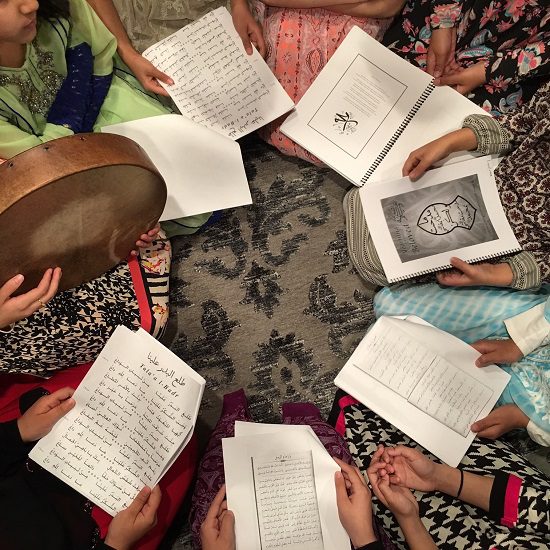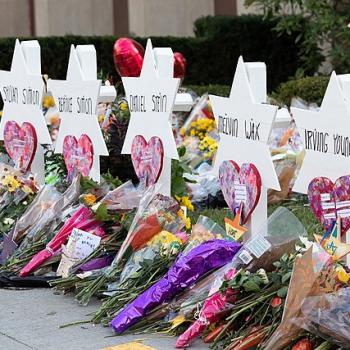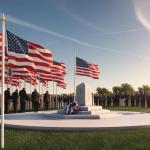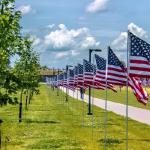 |
|
The author in Pakistan
|
How am I supposed to write about the earthquake relief effort in Pakistan? There’s too much to share, of which most I won’t get to. A little about me: I work for the US Army Corps of Engineers and am a civil engineer. I am currently on a deployment to Afghanistan. From Kabul, I arrived in Rawalpindi at the Chaklala Air Force base on 13 October 2005 with my team of 6. Before putting foot in Pakistan I did not have much information on the mission. Unanswered questions were how long we would stay, what were we going to do, where were we going to stay. I tried to prepare myself for anything. Being in Pakistan for almost 3 weeks, I felt a rainbow of emotions from sadness to anger to frustration to guilt to happiness. It has been difficult for me to come to terms with the fact that my team did not come here to pull people out of the rubble or to drop supplies or to bring injured persons to care. My team came here to do engineering work, to assess structural damage to roadways, bridges, schools, and clinics. I have thought of the mission in 3 phases: the relief effort, assessing the damage, and reconstruction. And, obviously, my work has been with the last two phases.
The engineering aspect
My first week in Pakistan, my teammates and I conducted aerial reconnaissance of the effected areas near and around and epicenter of the earthquake. The assessments were conducted in support of the US Disaster Assistance Center (DAC). We called it “DAC PAK.” The overall purpose of these missions and assessments was to determine if the US Army Corps of Engineers (USACE) could facilitate the humanitarian relief operations in Pakistan. The primary focus areas were roads and bridges leading to the areas needing disaster relief. My company, the USACE, coordinated with the Pakistani government through the Pakistani military and our US Navy Admiral’s staff to identify focus areas. We flew on Blackhawks and Chinooks in conjunction with humanitarian supply and casevac flights. The aircrafts flew from Chaklala Airbase (where we were staying) in Rawalpindi through the Muree Hills to Muzaffarabad, the Pakistani capital of Kashmir.
 |
|
We would land in the Muzaffarabad stadium to unload relief supplies and load injured persons onto the aircraft. This was one of the most significant initial collection points for the earthquake relief effort with several organizations providing their services to the local population.
A massive mountain collapse was observed southeast of Muzaffarabad. This landslide blocked a significant portion of a smaller valley and created a dam. Loose material including rock and dirt could be seen piled up to form massive dunes. Remnants of houses were observed in the debris. Seeing all this I felt awe, fear, and the presence of Something greater. I was having a difficult time comprehending how this could have happened.
Overall, the weather in Islamabad and surrounding areas was beautiful when I was there. It did get cold at night though. There were a few days where we could not fly due to rain and fog causing low visibility. One day we tried to push the limit to reach two cities pretty far north (Batgram and Ughi), but we encountered fog and freezing rain on the way to our destination. We did not push all the way through, and I was glad. We could not land, so we did a supply drop. It was heart-wrenching to see the villagers below running with all their might to catch something, anything from the helo. Below there was complete devastation. Severely damaged homes were observed. The walls had turned to rubble. The roofs were leveled with the ground. The only thing they were still good at was deceiving observers from the sky into thinking there were still sound walls under those roofs.
The most severely damaged area I saw was about 20 kilometers southeast of Muzaffarabad from Garhi Dupatta to Chakothi. This region we also nicknamed Vermont Valley � one of the hardest hit areas. It is completely closed off to ground traffic. The one main road running along the valley floor (approximately 40 kilometers) is cut by landslides, damaged bridges, or culverts virtually every kilometer. Some sections of landslide are hundreds of meters long. Chakothi is 11 kilometers from the Indian border, and we landed in both cities, Garhi Dupatta and Chakothi. This area along an arc from Muzaffarabad to Chakothi is best described as devastated. This route has sustained significant damage such as landslides, large cracks from shear failure, and in places the shelf has completely sheared off by landslides. Extensive reconstruction will be required. This area generally has 80-90% of structures flattened by the earthquake.
The ‘people to people’ aspect
 |
|
Our biggest challenge was access to the areas in the mountains. There were people trapped for weeks, and there are people who still are trapped, who are injured and need medical care. The best method was airdrops of goods. Many of the roads will take time to clear – many of the roads are completely gone. My most overwhelming moment was on Day 11 of my trip when we landed at the Muzaffarabad stadium and were loading injured children in the back of our Blackhawk. I felt nothing, and then all of a sudden came these intense emotions and before I knew it, I was a wreck.
You see helplessness all around you. You sense the fear and mental instability of the folks in these places. I met and conversed with old university male professors who were absolutely shaken and close to tears, who were rattled, who were frazzled. They were terrified of going inside buildings in the fear that they would collapse in on them. There was this one professor who clenched his heart and almost fainted when my camera flashed inside one of the damaged buildings. I felt horrible, but how was I to know that a flash would shake this man up like it did. Then he started talking about how his sister died in a building, but he never finished the story. I think it was too painful for him, and I couldn’t ask further. It has become normal here to say “oh, my kids are dead” or “oh, yah my mom died and my dad is injured,” and sometimes you see no tears. It’s just a fact – so real that there are no tears. How much can you cry? People are numb. They are petrified another earthquake will come and kill them and their families. And it isn’t helping that there are tremors everyday.
 |
|
I met children who followed me around as I walked in the rubble of what used to be the University of Azad Jammu and Kashmir and went in buildings for assessments – the kids did not crack a smile and just followed me quietly. I would talk to them, and they understood every single word I said, but they were mostly unresponsive. What was I to say to a kid whose father was missing for 2 weeks and mother injured? When we took our road mission, we had a Pakistani driver named Imran. It was Ramadan, and he was fasting. I asked him why he was still fasting after so much devastation. He told me that there wasn’t much to eat anyways, so might as well fast. Even when he opened his fast, there was nothing to really eat – no restaurants were open in Muzaffarabad and no fresh food was making it up. You could find a fruit or two or some biscuits – but that was mostly it. I tried to get my halaal MREs sent from Islamabad to M-bad, but they didn’t make it. I still think about him and hope he is well. I met an old grandpa “baba” on the streets of Muzaffarabad, and he was so incredibly old and helpless. He was so adorable. I just pulled out some money and gave that to him and said pray for me and my family. Then, he started rattling off in some language I couldn’t understand, so I asked Imran what he was saying, and he said he’s giving you lots of blessings. Giving that old man money, I felt good like I really might have helped someone, like I did something real. Engineering work at times just didn’t feel rewarding because it lacked the ‘people’ aspect of it all, which I was craving the whole time I was in Pakistan. My favorite times were when I was conversing with the common folks in Urdu.
I can’t adequately explain in words the intensity I saw. It’s devastation. You feel so helpless. Flying through the ruined towns, I felt nauseous from the smell of death. Obviously, I did not fast. I thought about the people who were inside their homes or schools or shops at the time the earthquake struck. They must have experienced their entire home; ceiling and walls just fall in on them. They did not even have time to move. They were buried under rubble while the earth shook violently. Many of them never made it out.
The massive coordination effort
 |
|
One of the many rewarding parts of this trip I want to take time to mention is the coordination effort between the different groups of people in Pakistan. Everyone was there for the same reason – to help in whatever capacity they could. People brought different expertise to the table and took initiative. They took pride in their work too. For me, as an American-Pakistani, it was comforting to see the Pakistani and American military work hand in hand. I was highly impressed with the Pakistani military. Their passion, initiative, determination, support, and warmth were incredible. Every flight we took, there was a Pakistani military safety pilot who was a part of the crew. They guided us. I made many Pak mil friends, and these are friends who will always hold a special place in my heart. Was it possible to feel such warmth and unity out of such tremendous destruction and devastation? The irony.
What now? The immediate need now is shelter. The cold months are approaching rapidly. So far we’ve been lucky because normally it’s cooler at this time of year in northern Pakistan. It will and has started to snow in the mountains, and more than anything else organizations are trying to secure shelter for the people now. There are organizations on the ground also thinking long-term. Reconstruction of roads, schools, and clinics will be next.
While my observations and experiences have been specific to Muzaffarabad, Garhi Dupatta, Chakothi, and Mansehra and while the situation in other areas (Siran, Batgram, Naran, Khagan etc.) may be different, I do feel that they would be generally representative of the overall situation and challenges. In the first few days after the quake, there was an outpouring of emotion around the world and people from far and wide embarked on all kinds of relief drives in a genuine display of solidarity. Please don’t let this passion die. The displaced Pakistanis, Kashmiris, and Indians still need your monetary help, your physical help, and your prayers. There are many ways to help. As for me, I have returned to Kabul now. Our mission is over, for now. Things here change so quickly that it’s hard to say if my organization will return or not. It was an absolute honor for me to work in Pakistan, even for a little bit of time. I whole-heartedly thank God for allowing me the opportunity, and I thank my Command here in Afghanistan for adding my name to the team, so I could help the country my parents are from. I would not have traded it for anything.
Editor’s note: The views expressed in this article are those of the author and do not reflect the official policy or position of the Department of the Army, Department of Defense, or the United States Government.
Maryam Khan is a Project Manager with the US Army Corps of Engineers, and is currently based in Afghanistan.











